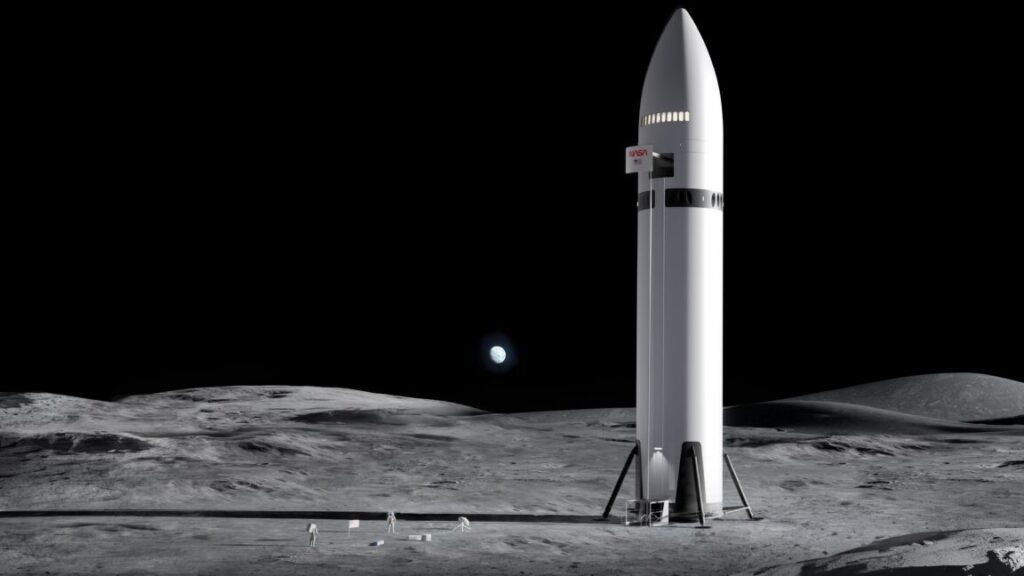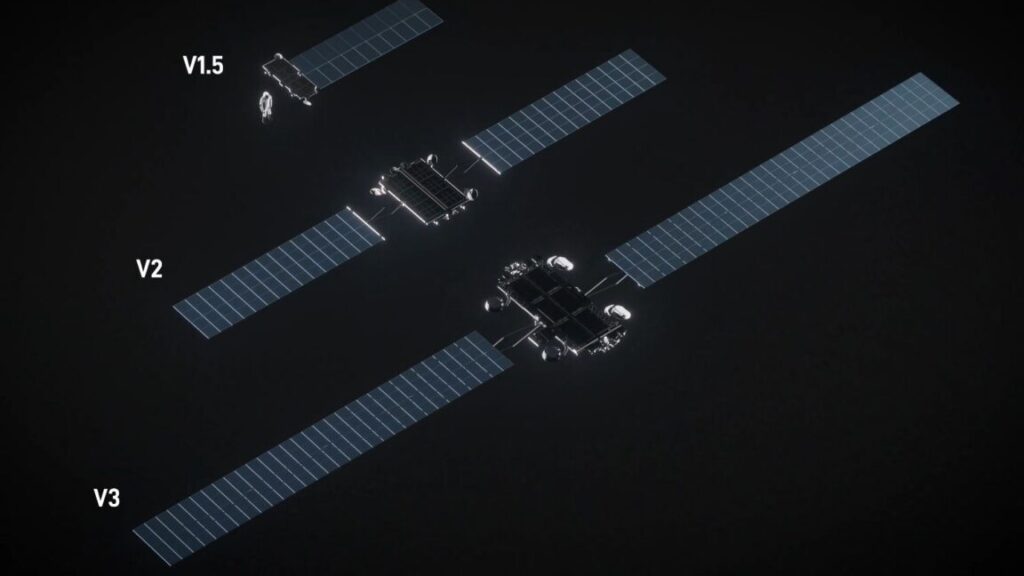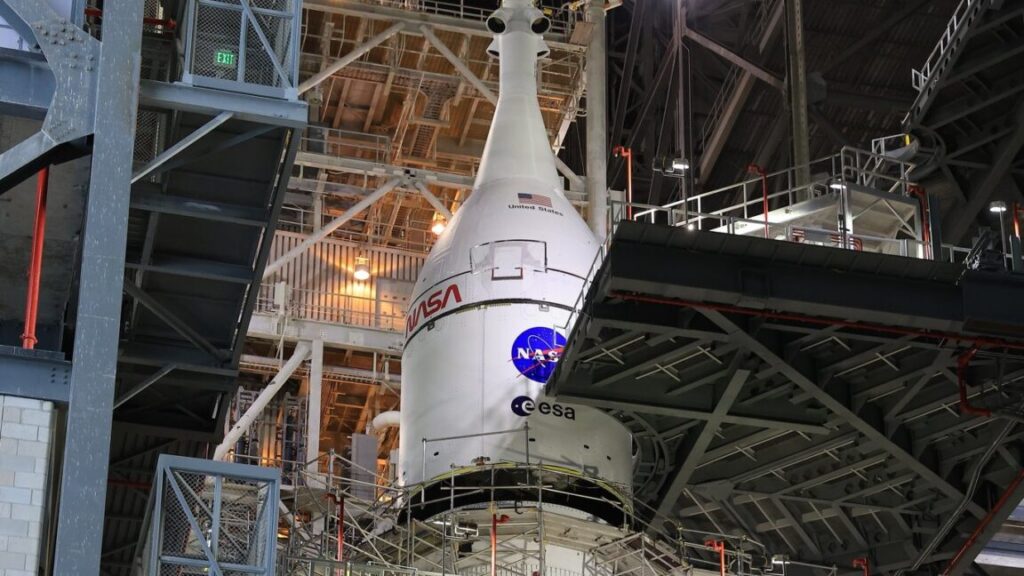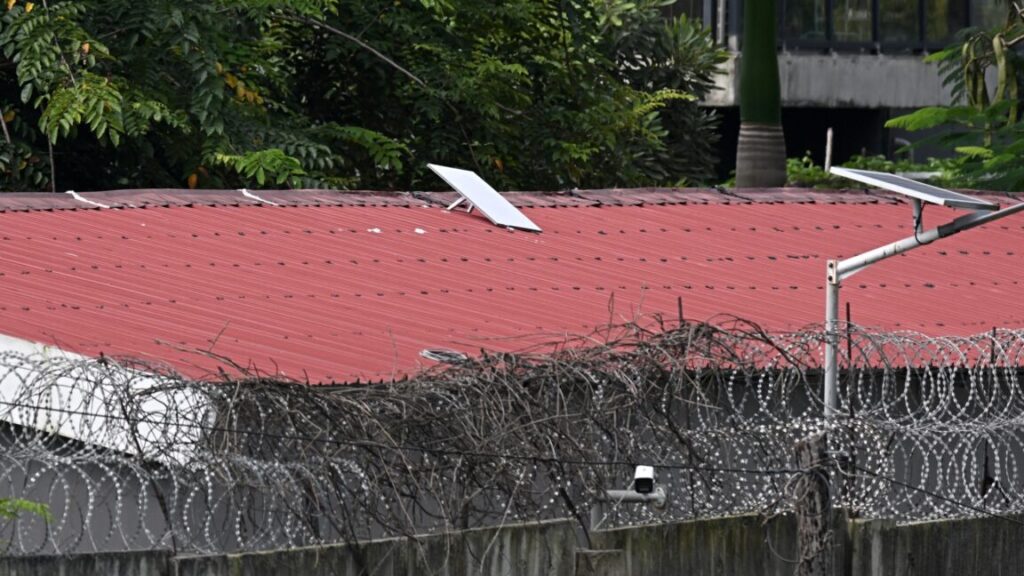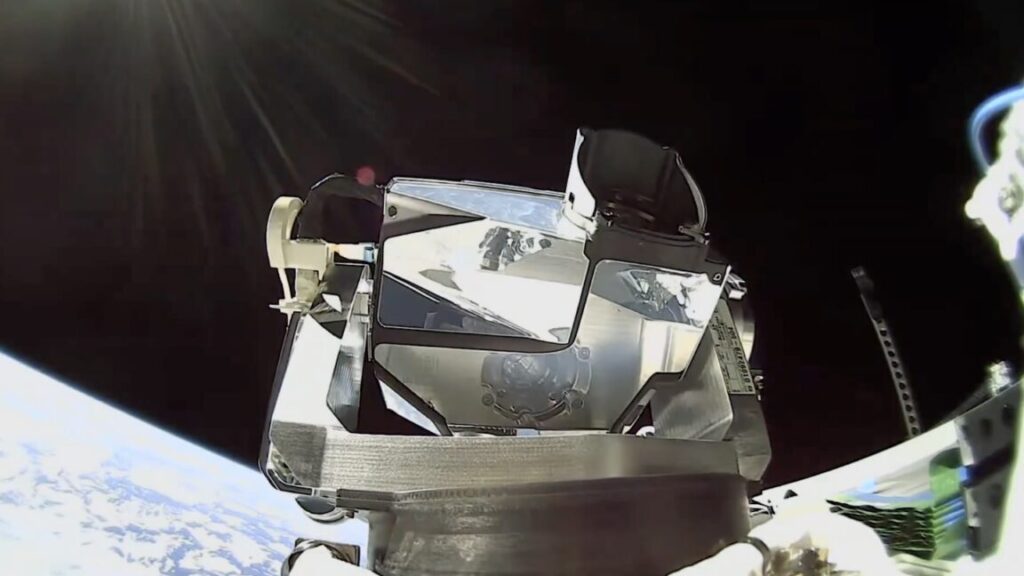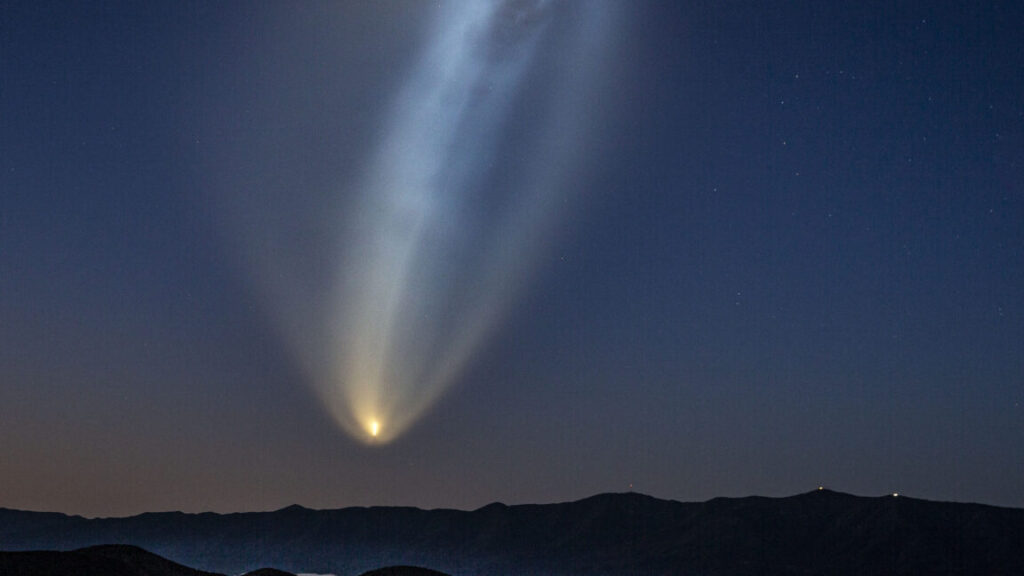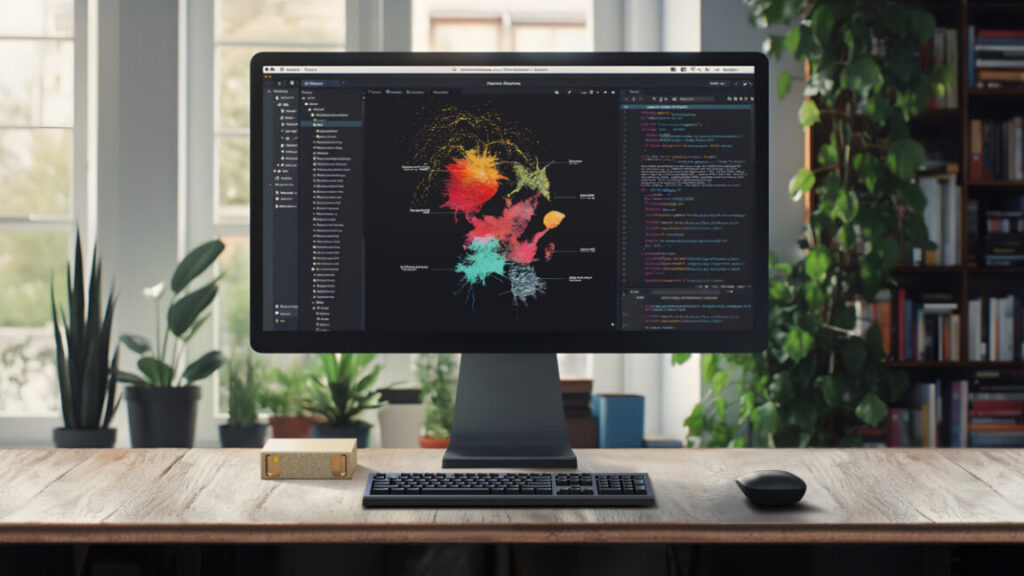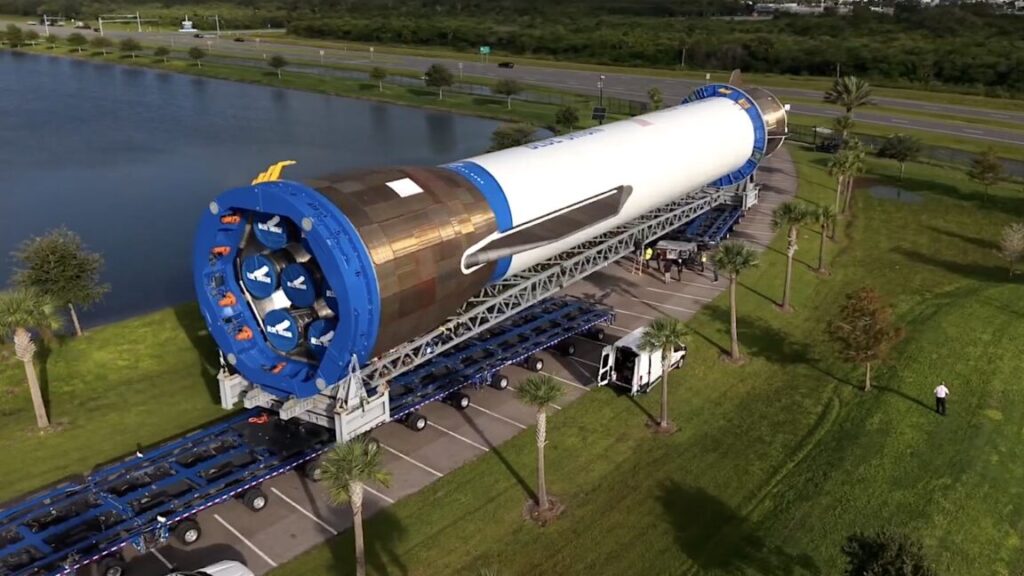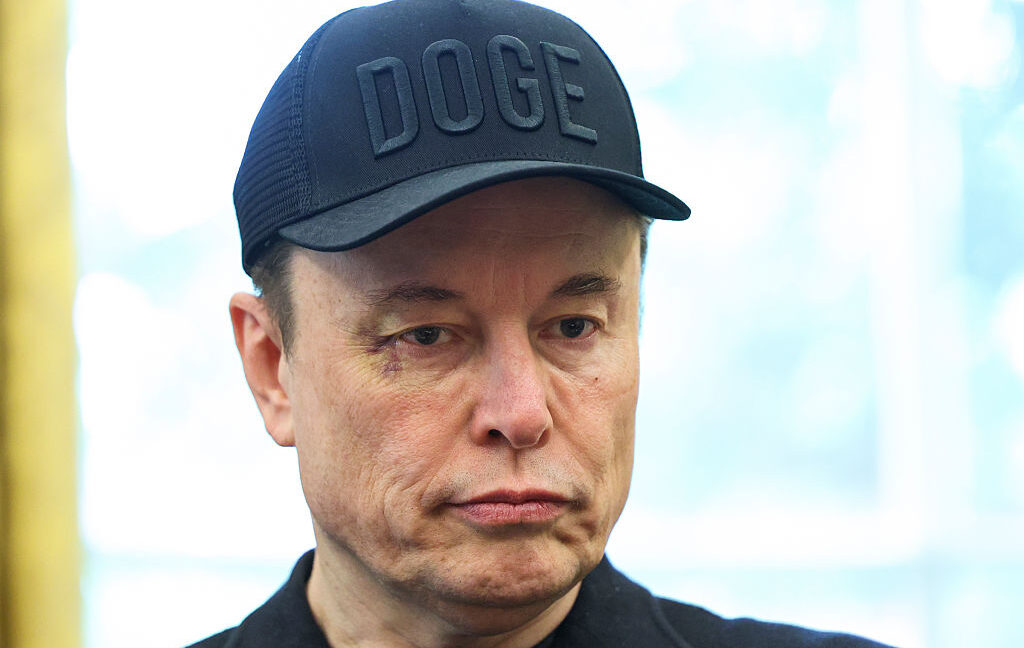SpaceX teases simplified Starship as alarms sound over Moon landing delays
“SpaceX shares the goal of returning to the Moon as expeditiously as possible.”
Artist’s illustration of Starship on the surface of the Moon. Credit: SpaceX
SpaceX on Thursday released the most detailed public update in nearly two years on its multibillion-dollar contract to land astronauts on the Moon for NASA, amid growing sentiment that China is likely to beat the United States back to the lunar surface with humans.
In a lengthy statement published on SpaceX’s website Thursday, the company said it “will be a central enabler that will fulfill the vision of NASA’s Artemis program, which seeks to establish a lasting presence on the lunar surface… and ultimately forge the path to land the first humans on Mars.”
Getting to Mars is SpaceX’s overarching objective, a concise but lofty mission statement introduced by Elon Musk at the company’s founding nearly a quarter-century ago. Musk has criticized NASA’s Artemis program, which aims to return US astronauts to the Moon for the first time since the last Apollo lunar mission in 1972, as unambitious and too reliant on traditional aerospace contractors.
Is this a priority for SpaceX?
The Starship rocket and its massive Super Heavy booster are supposed to be SpaceX’s solution for fulfilling Musk’s mission of creating a settlement on Mars. The red planet has been the focus each time Musk has spoken at length about Starship in the last couple of years, with Moon missions receiving little or no time in his comments, whether they’re scripted or off the cuff.
In the background, SpaceX’s engineers have been busy developing a version of the Starship rocket to fly crews to and from the surface of the Moon for NASA. The agency’s current architecture calls for astronauts to transit from the Earth to the vicinity of the Moon inside NASA’s Orion spacecraft, made by Lockheed Martin, then link up with Starship in lunar orbit for a ride to the Moon’s south pole.
After completing their mission on the surface, the astronauts will ride Starship back into space and dock with Orion to bring them home. Starship and Orion may also link together by docking at the planned Gateway mini-space station orbiting the Moon, but Gateway’s future is in question as NASA faces budget cuts.
NASA has contracts with SpaceX valued at more than $4 billion to land two astronaut crews on the Moon on NASA’s Artemis III and Artemis IV missions. The contract also covers milestones ahead of any human mission, such as an uncrewed Starship landing and takeoff at the Moon, to prove the vehicle is ready.
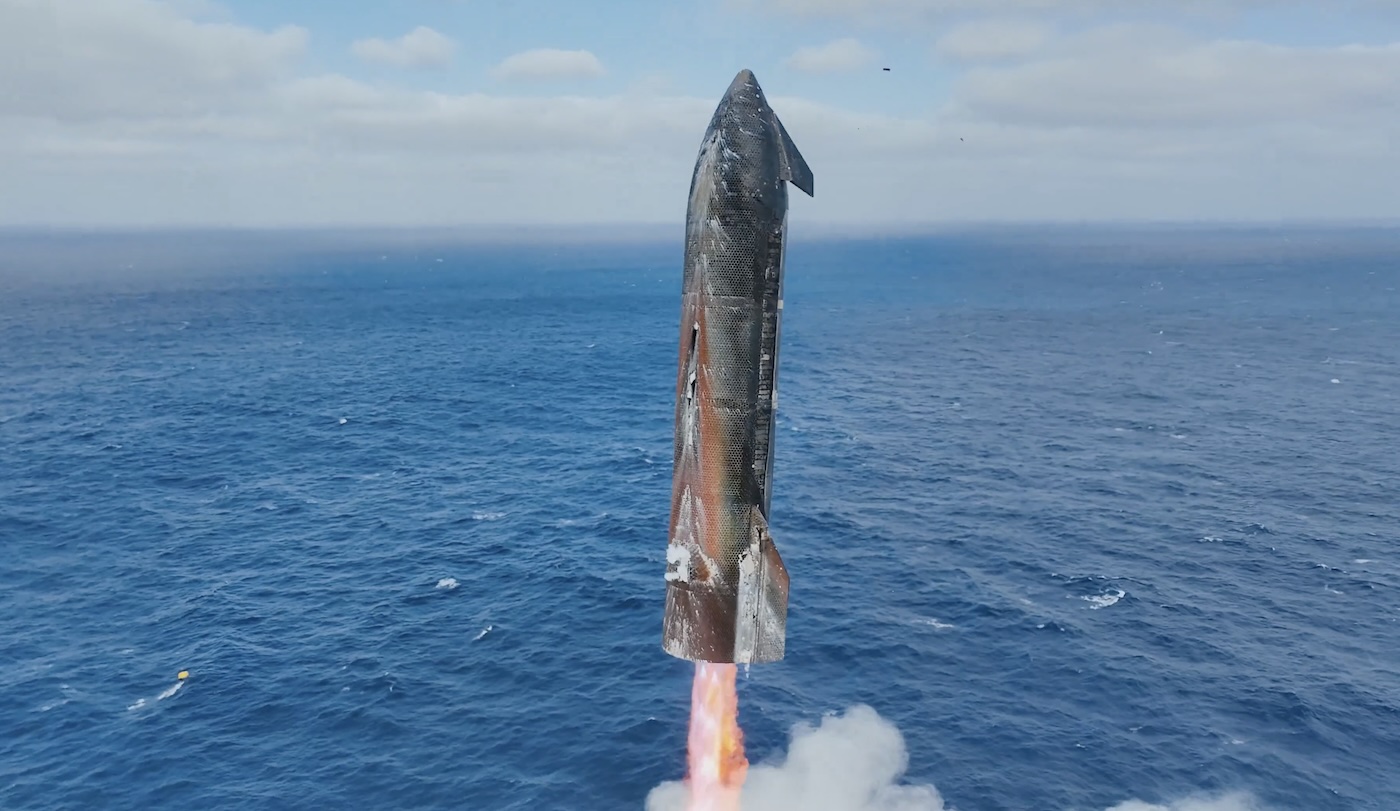
SpaceX’s Starship descends toward the Indian Ocean at the conclusion of Flight 11 on October 3. Credit: SpaceX
The fresh update from SpaceX lists recent achievements the company has accomplished on the path to the Moon, including demos of life support and thermal control systems, the docking adapter to link Starship with Orion, navigation hardware and software, a landing leg structural test, and engine firings in conditions similar to what the ship will see at the Moon.
Many of these milestones were completed ahead of schedule, SpaceX said. But the biggest tests, such as demonstrating in-orbit refueling, remain ahead. Some NASA officials believe mastering orbital refueling will take many tries, akin to SpaceX’s iterative two steps forward, one step back experience with its initial Starship test flights.
The first test to transfer large amounts of cryogenic liquid methane and liquid oxygen between two Starships in low-Earth orbit is now planned for next year. This time a year ago, SpaceX aimed to launch the first orbital refueling demo before the end of 2025.
Orbital refueling is key to flying Starship to the Moon or Mars. The rocket consumes all of its propellant getting to low-Earth orbit, and it needs more gas to go farther. For lunar missions, SpaceX will launch a Starship-derived propellant depot into orbit, refill it with perhaps a dozen or more Starship tankers, and then dock the Starship lander with it to load its tanks before heading off to the Moon.
Officials haven’t given a precise number of tanker flights required for a Starship lunar lander. It’s likely engineers won’t settle on an exact number until they obtain data on how much of the super-cold liquid propellant boils off in space, and how efficient it is to transfer from ship to ship. Whatever the number, SpaceX says Starship’s design for recovery and rapid reuse will facilitate a fast-paced launch and refueling campaign.
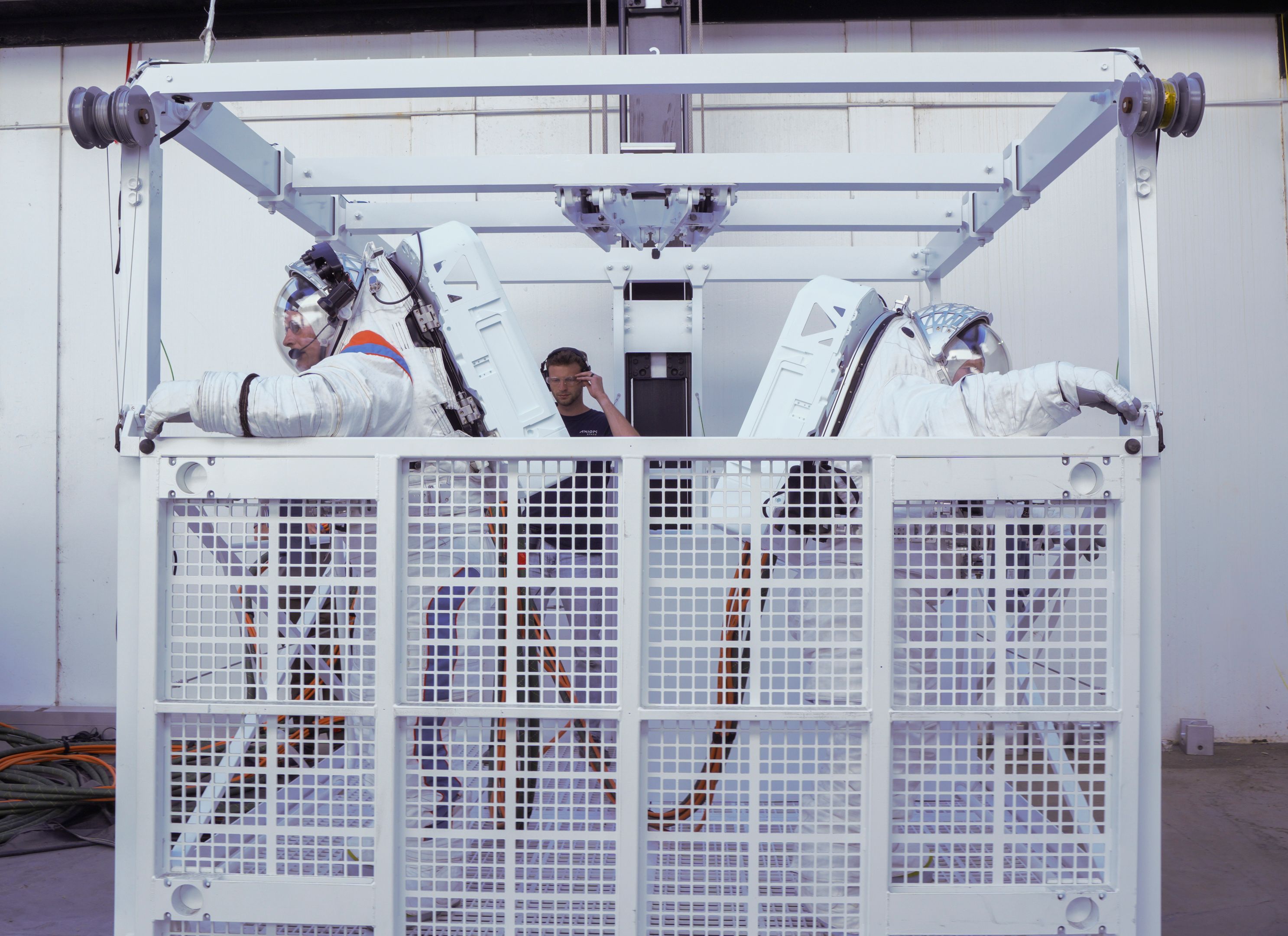
SpaceX tests the elevator to be used on Starship. Credit: SpaceX
The upshot of overcoming the refueling hurdle is Starship’s promise of becoming a transformative vehicle. Starship is enormous compared to any other concept for landing on the Moon. One single Starship has a pressurized habitable volume of more than 600 cubic meters, or more than 21,000 cubic feet, roughly two-thirds that of the entire International Space Station, according to SpaceX. Starship will have dual airlocks, or pathways for astronauts and equipment to exit and enter the spacecraft.
An elevator will lower people and cargo down to the lunar surface from the crew cabin at the top of the 15-story-tall spacecraft. For pure cargo missions, SpaceX says Starship will be capable of landing up to 100 metric tons of cargo directly on the Moon’s surface. This would unlock the ability to deliver large rovers, nuclear reactors, or lunar habitats to the Moon in one go. In the long run, the Starship architecture could allow landers to be reused over and over again. All of this is vital if NASA wants to build a permanent base or research outpost on the Moon.
A competition in more ways than one
But hard things take time. SpaceX dealt with repeated setbacks in the first half of this year: three in-flight failures of Starship and one Starship explosion on the ground at the company’s development facility in South Texas. Since then, teams have reeled off consecutive successful Starship test flights ahead of the debut of an upgraded Starship variant called Version 3 in the coming months. Starship Version 3 will have the accoutrements for refueling, and SpaceX says this will also be the version to fly to the Moon.
The recent Starship delays, coupled with the scope of work to go, have raised concerns that the Artemis program is falling behind China’s initiative to land its own astronauts on the Moon. China’s goal is to do it by 2030, a schedule reiterated in Chinese state media this week. The Chinese program relies on an architecture more closely resembling NASA’s old Apollo designs.
The official schedule for the first Artemis crew landing, on Artemis III, puts it in 2027, but that timeline is no longer achievable. Starship and new lunar spacesuits developed by Axiom Space won’t be ready, in part because NASA didn’t award the contracts to SpaceX and Axiom until 2021 and 2022.
All of this adds up to waning odds that the United States can beat China back to the Moon, according to a growing chorus of voices in the space community. Last month, former NASA chief Jim Bridenstine, who led the agency during the first Trump administration, told Congress the United States was likely to lose the second lunar space race.
At a space conference earlier this week, Bridenstine suggested the Trump administration use its powers to fast-track a lunar landing, even floating the idea of invoking the Defense Production Act, a law that grants the president authority to marshal industrial might to meet pressing national needs.
An executive order from President Donald Trump could authorize such an effort and declare a “national security imperative that we’re going to beat China to the Moon,” Bridenstine said at the American Astronautical Society’s von Braun Space Exploration Symposium in Huntsville, Alabama.
Charlie Bolden, NASA’s administrator under former President Barack Obama, also expressed doubts that NASA could land humans on the Moon before China, or by the end of Trump’s term in the White House. “Let’s be real, OK? Everybody in this room knows, to say we’re going to do it by the end of the term, or we’re going to do it before the Chinese, that doesn’t help industry.”
But Bolden said maybe it’s not so terrible if China lands people on the Moon before NASA can return with astronauts. “We may not make 2030, and that’s OK with me, as long as we get there in 2031 better than they are with what they have there.”
Sean Duffy, NASA’s acting administrator, doesn’t see it the same way. Duffy said last week he would give contractors until this Wednesday to propose other ways of landing astronauts on the Moon sooner than the existing plan. SpaceX and Blue Origin, the space company founded by billionaire Jeff Bezos, confirmed they submitted updated plans to NASA this week.
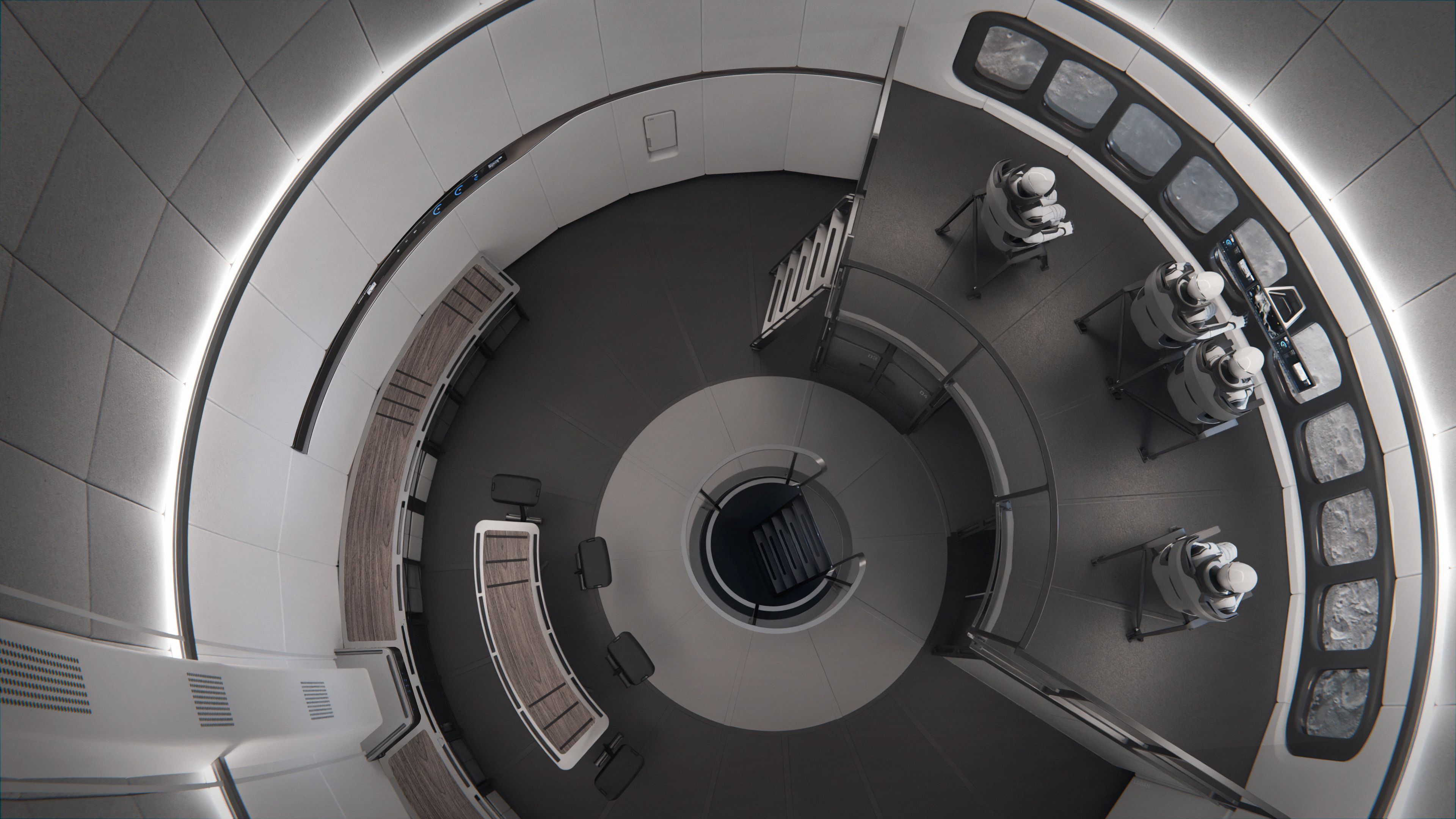
SpaceX released a new rendering of the internal crew cabin for the Starship lunar lander. Credit: SpaceX
Blue Origin has a separate contract with NASA to provide its own human-rated lunar lander—Blue Moon Mark 2—for entry into service on the Artemis V mission, likely not to occur before the early 2030s. A smaller unpiloted lander—Blue Moon Mark 1—is on track to launch on Blue Origin’s first lunar landing attempt next year.
Blue Moon Mark 1 is still a big vehicle, standing taller than the lunar lander used by NASA during the Apollo program. But it doesn’t match the 52-foot (16-meter) height of Blue Origin’s Mark 2 lander, and tops out well short of the roughly 165-foot-tall (50-meter) Starship lander.
What’s more, Blue Moon Mark 1 won’t need to be refueled after launch, unlike Starship and Mark 2. Jacki Cortese, senior director of civil space at Blue Origin, confirmed Tuesday that her company is looking at employing a “more incremental approach” using Mark 1 to accelerate an Artemis crew landing. Ars first reported Blue Origin was studying how to modify Blue Moon Mark 1 for astronauts.
All of this is a reminder of something Blue Origin said in 2021, when NASA passed over Bezos’ company to award the first Artemis lander contract to SpaceX. Blue Origin protested the award and filed a lawsuit against the government, triggering a lunar lander work stoppage that lasted several months until a federal judge dismissed the suit.
Blue Origin said SpaceX’s approach with numerous refueling sorties was “immensely complex and high risk” and argued its proposal was the better option for NASA. The statement has taken on a meme-worthy status among fans of Starship.
But SpaceX bid a lower cost, and NASA officials said it was the only proposal the agency could afford at the time. And then, when Blue Origin won a contract from NASA in 2023 to provide a second lander option, the company’s concept also hinged on refueling the Blue Moon Mark 2 lander in space.
Now, SpaceX is making a new offering to NASA. Like Blue Origin, SpaceX said it has sent in a proposal for a “simplified architecture” for landing astronauts on the Moon, but did not provide details.
“We’ve shared and are formally assessing a simplified mission architecture and concept of operations that we believe will result in a faster return to the Moon while simultaneously improving crew safety,” the company said.
Since NASA selected SpaceX for the Human Landing System contract in 2021, the company said it has been “consistently responsive to NASA as requirements for Artemis III have changed.”
For example, NASA originally required SpaceX to only demonstrate it could land Starship on the Moon before moving forward with a crew mission. Lori Glaze, who leads NASA’s human exploration division, said in July that the agency is now requiring the uncrewed landing demo to also include an ascent from the Moon’s surface. NASA wants to know if Starship can not just land astronauts on the Moon, but also get them back.
“Starship continues to simultaneously be the fastest path to returning humans to the surface of the Moon and a core enabler of the Artemis program’s goal to establish a permanent, sustainable presence on the lunar surface,” SpaceX said. “SpaceX shares the goal of returning to the Moon as expeditiously as possible, approaching the mission with the same alacrity and commitment that returned human spaceflight capability to America under NASA’s Commercial Crew program.”
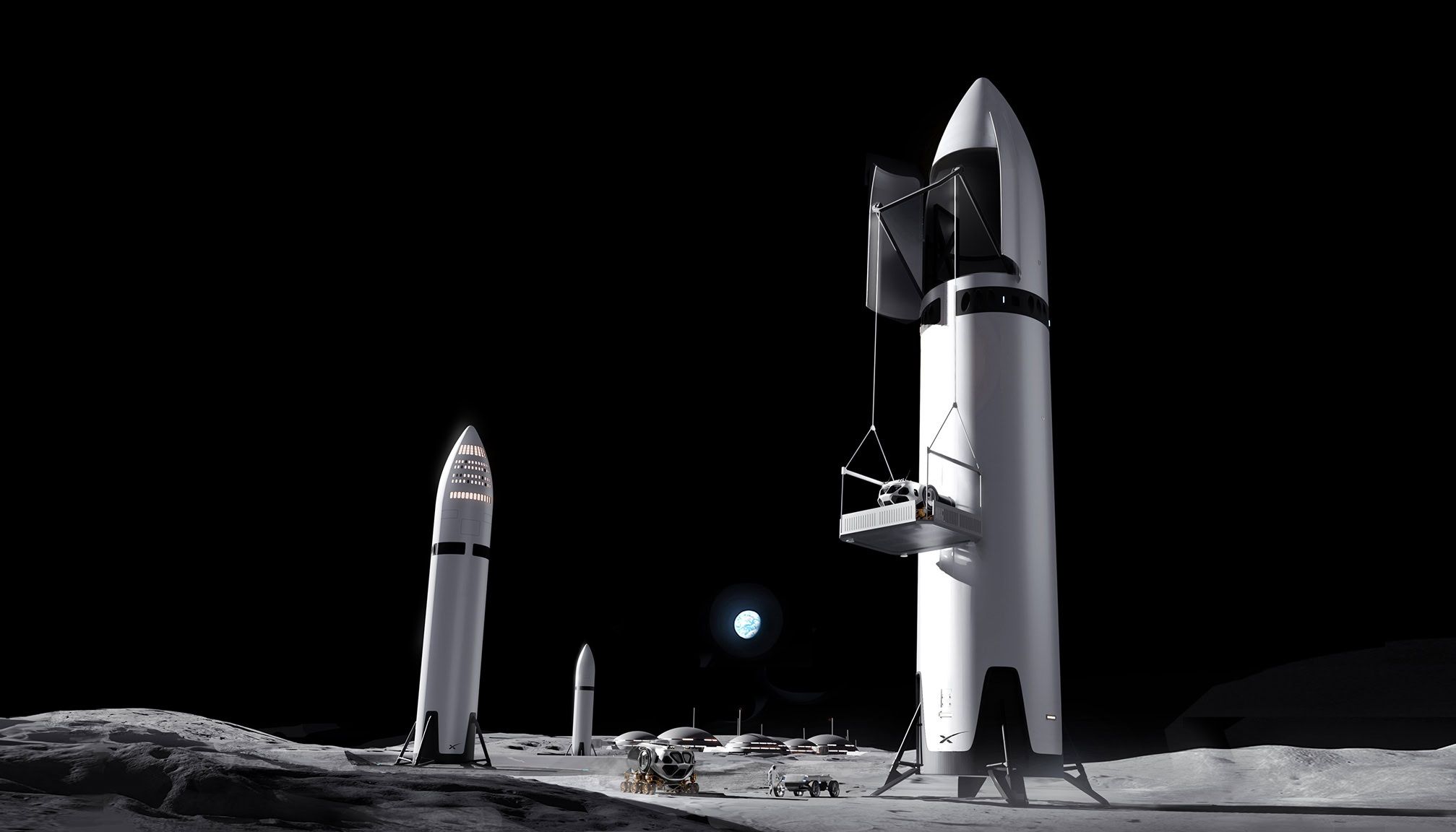
An artist’s illustration of multiple Starships on the lunar surface, with a Moon base in the background. Credit: SpaceX
SpaceX has built a reputation for doing things quickly. One example has been the rapid-fire launch cadence of the company’s workhorse Falcon 9 rocket. SpaceX is setting up launch pads and factories to manufacture and launch Super Heavy and Starship—combining together to make the largest rocket ever built—at an even faster rate than Falcon 9.
The company has launched 11 full-scale test flights of Starship/Super Heavy since April 2023. “This campaign has quickly matured the core Starship and has produced numerous feats,” SpaceX said. The company listed some of them:
- Multiple successful ascents of the world’s most powerful rocket
- The launch, return, catch, and reuse of that rocket to unlock the high launch rate cadence needed for lunar missions
- The transfer of approximately 5 metric tons of cryogenic propellant between tanks while in space
- Successful in-space relights of the Raptor engines that are critical for the maneuvers that will send Starship to the Moon
- Multiple controlled reentries through Earth’s atmosphere
It’s true that these feats have come fast. Many more remain on the road ahead before SpaceX can make good on its commitment to NASA.
SpaceX teases simplified Starship as alarms sound over Moon landing delays Read More »
